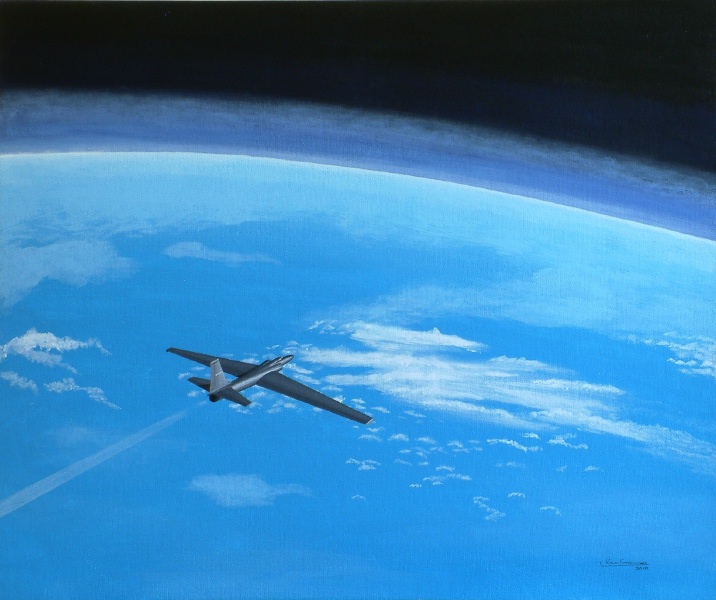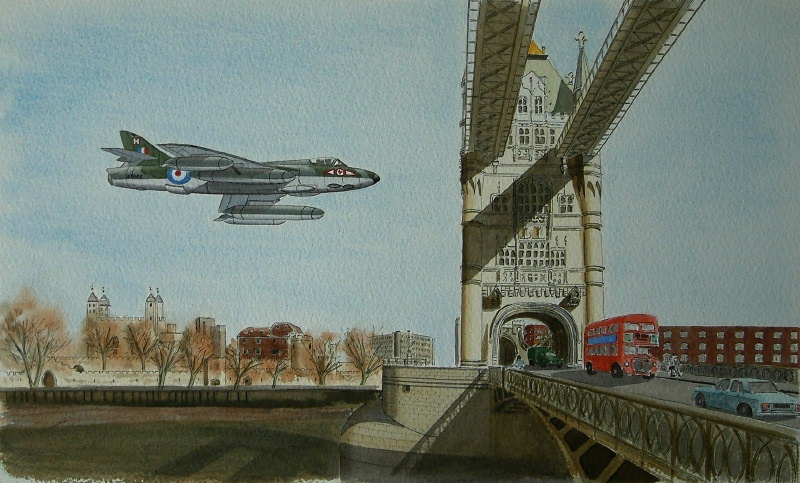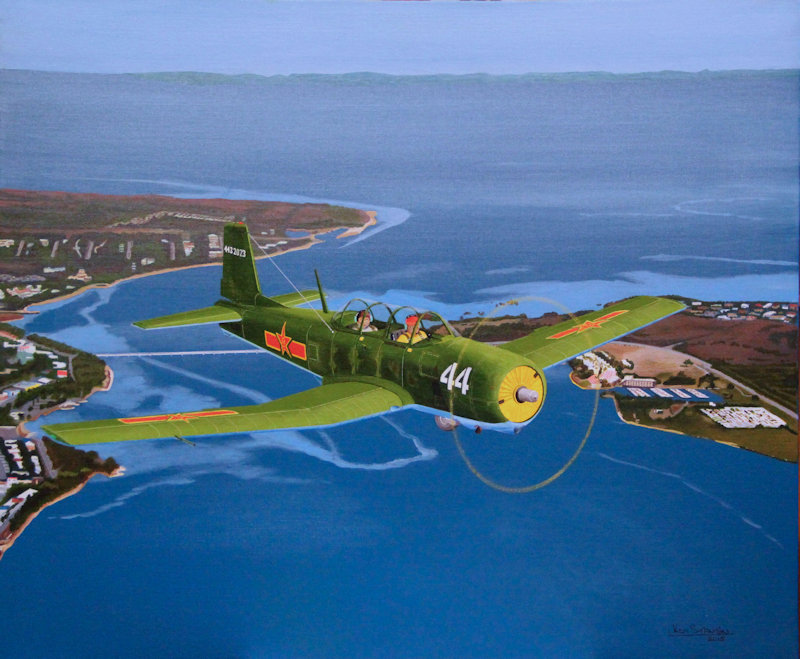
Nanchang CJ6A
(VH-NNF)
The Nanchang CJ6A is a Yak 18 Trainer built under licence by the Chinese Airforce.
VH-NNF is co-owned by three aviation enthusiasts and flies from Caboolture Airfield in Queensland, Australia.
Here, VH-NNF is depicted over Pumicestone Passage. In the foreground to the left is Bribie Island with the bridge that connects it to Sandstone Point.
Moreton Island is on the horizon.
Acrylic on 20" x 24" Canvas Board
Commissioned by Mr Robert Mathieson
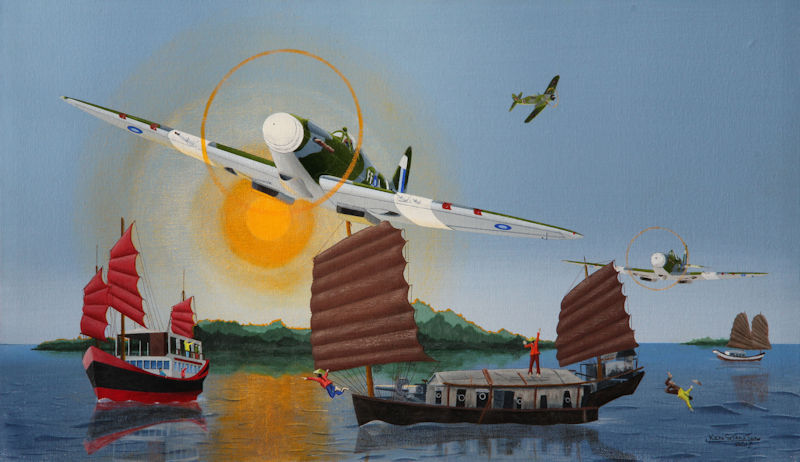
Putting on the 'Frighteners'
In 1946, 132 Squadron of the RAF were based at Kai Tak airfield in Hong Kong. At that time, they were equipped with Supermarine Spitfire Mk XIV aircraft.
Chinese pirates operating armed Junks were causing some problems for local shipping. On January 12th 132 Squadron was tasked with mounting an attack on these Pirate Junks who were, at that time, off the island of Peng Chau.
The operation was overseen by a Royal Navy Commander flying a Chance Vought ‘Corsair’ operating from HMS Nabcatcher. HMS Nabcatcher was Fleet Air Arm MONAB VIII (MObile Naval Air Base) which was also at based at Kai Tak.
These aircraft and Pilots were involved in the mission:
Spitfire XIV RM 905 (FF-J) Warrant Officer J.E.R. Beavan 13-40 to 14-25 hrs.
Spitfire XIV RM 986 (FF-Q) Flight Sergeant S.G.S. Mitchell 13-40 to 14-25 hrs.
Spitfire XIV RM 143 (FF-A) Flight Lieutenant L.I. Forbes 13-40 to 13-50 hrs.
Verbatim from 132 Sq.’s ORB:
Anti-Piracy Scramble
“J” and “Q” were scrambled at 13-40 hrs., but since F/S Mitchell’s aircraft had difficulty in starting owing to faulty starter cartridges, F/L Forbes took off in “A”. He was followed immediately by the original Number Two, so landed at 13-50 hrs.
The section of two aircraft was ordered to rendezvous over PING CHOU at 5,000 feet, and await instructions from a Royal Navy Commander, who was already over the area in a Corsair. The section was to be prepared to fire between the pirate junk and the shore, but since there were many other junks in the vicinity, the Commander explained that this would be impossible. The aircraft therefore returned to base and the duty was without incident.
In the ‘Monthly Summary’ for January 1946 was written:
The Spitfire section was to be prepared to fire between the pirate junk and the shore, to head them off, but the Commander called over the R/T and explained that this would be impossible, since there were other junks in the vicinity. The section therefore returned to base, greatly disappointed, and landed safely at 14-25 hours. (My italics)
Robert Mathieson and I discussed the fact that the pilots, having been denied the chance to fire their guns that day, would possibly have flown in a manner guaranteed to ensure that the pirates recognised that they meant business!!
Acrylic on 20" x 14" Canvas Board
Commissioned by Mr Robert Mathieson
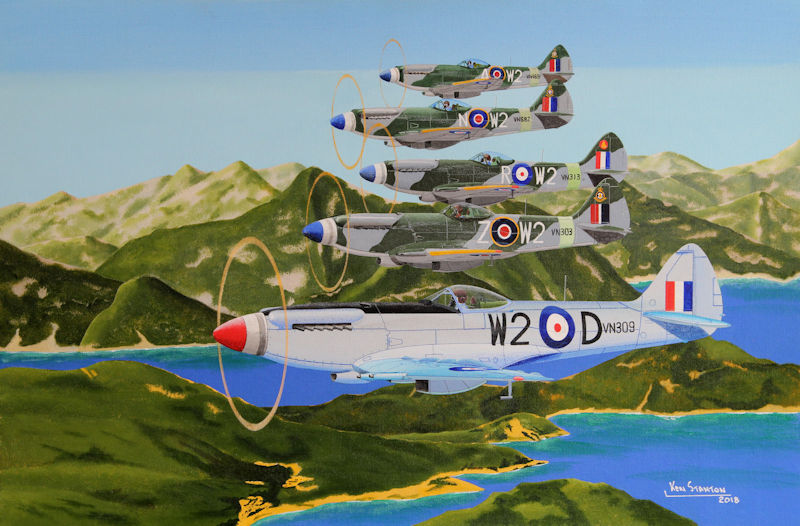
Inbound to Kai Tak
There is a very well known black and white photograph of five 80 Squadron Mk 24 Spitfires flying in the Hong Kong area. Robert asked me to recreate that image as a painting. I wanted to avoid a direct copy of that photograph. So, after three concept sketches that were not quite what Robert had in mind, we sat down and talked it through. The result is this picture.
Acrylic on 32" x 22" Canvas Board
Commissioned by Mr Robert Mathieson

Freeman's Folly
The building of the Mosquito Prototype was a private venture by De Havilland but was supported by Sir William Freeman (Vice Chief of the Air Staff) against 'official' resistance.
E0234 was the prototype's number before adoption by the Air Ministry when she became W4050.
She still exists at the Mosquito Museum at London Colney, Hertfordshire; close to her original home.
(Acrylic on Canvas Board 22" x 18" - framed)
£300 + shipping costs
